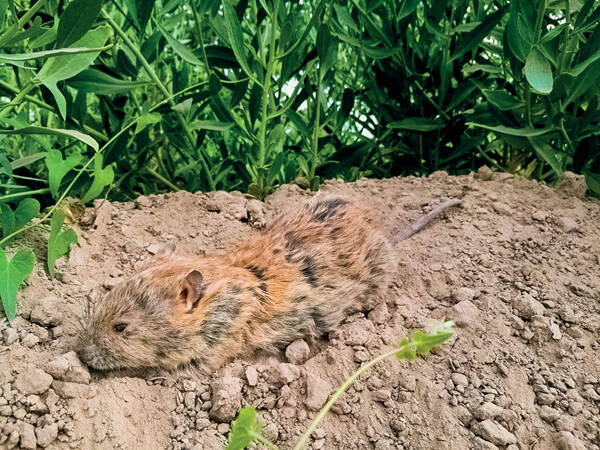Nesokia indica
IUCN
LCBasic Information
Scientific classification
- name:Nesokia indica
- Scientific Name:Nesokia indica
- Outline:Rodents
- Family:Rodentia Muridae Gopherus
Vital signs
- length:Average 185 mm
- Weight:
- lifetime:
Feature
The back of the body is light brown or sandy yellow, with the brown being more prominent in the center of the back.
Distribution and Habitat
In China, it is distributed in the eastern and southern parts of the Tarim Basin in Xinjiang, as well as the Turpan Basin. Abroad, it is distributed in India, Pakistan, Afghanistan, etc.
Appearance
The individuals are large. The average body length is 185mm. The tail is 110-130mm long, and it is very similar to the tail of the brown rat. It is thick and covered with ring-shaped scales, with short and thick hairs between the scales. The ears and eyes are relatively small, with an average ear length of 16.5mm, which does not reach the proportion of the species of the genus Mus. The front feet are relatively large and have long claws. The back of the body is light brown or sandy yellow, and the central part of the back is more brown. The tips of the hair on the ventral side are grayish white, often dyed with yellow tones. The skull is solid and thick, the whole is wide and short, the snout is short and blunt, and the incisor holes are short and narrow, forming a thin slit. The auditory bulla is small, the incisors are very wide, the lower incisors are wider than the upper incisors, the molar row is wide, and its chewing surface forms an oval enamel ring.
Details
The Indian ground mouse belongs to the genus Nesokia of the subfamily Murinae. There are 2 species in the world and 1 species in China. There is not much controversy about the species status. In history, my country has named 2 species of ground mice, which were later proved to be synonyms of the Indian ground mouse. There are many subspecies, but the Chinese subspecies is unknown. The typical habitat of this species is reed meadows. Its main food is underground rhizomes, which are harmful to crops.
The Indian ground mouse (scientific name: Nesokia indica) is an animal of the genus Nesokia of the family Muridae. It is distributed throughout western Asia and the Middle East, from Egypt in the west to Xinjiang in mainland China in the north. It is often found in deserts, irrigated fields and river valleys (no more than 1,000 meters in altitude). The type locality of this species is in India.
This species has been listed in the 2013 Red List of Threatened Species of the World Conservation Union (IUCN) ver3.1--Low Concern (LC).









